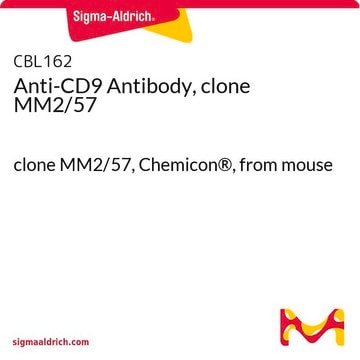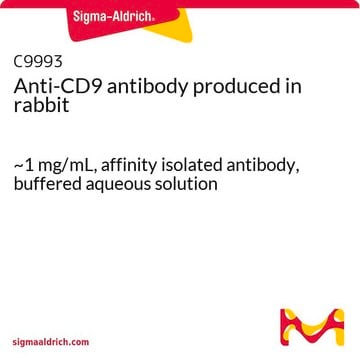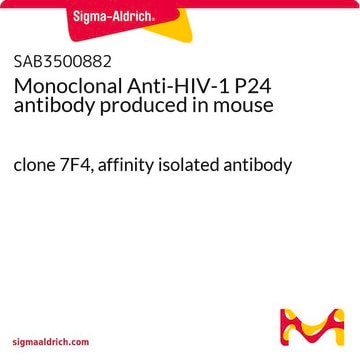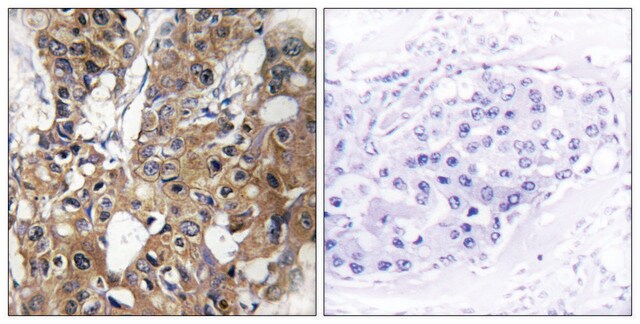詳細
We are committed to bringing you greener alternative products, which adhere to one or more of The 12 Principles of Green Chemistry.This antibody is Preservative-free, produced without the harm or sacrifice of animals and exceptionally stable to allow for ambient shipping and storage if needed and thus aligns with "Waste Prevention", "Designing Safer Chemicals" and "Design for Energy Efficiency".
Click here for more information.
ZooMAb® antibodies represent an entirely new generation of recombinant monoclonal antibodies. Each ZooMAb® antibody is manufactured using our proprietary recombinant expression system, purified to homogeneity, and precisely dispensed to produce robust and highly reproducible lot-to-lot consistency. Only top-performing clones are released for use by researchers. Each antibody is validated for high specificity and affinity across multiple applications, including its most commonly used application. ZooMAb® antibodies are reliably available and ready to ship when you need them.
特異性
Clone 2K2-k is a ZooMAb® rabbit recombinant monoclonal antibody that specifically detects CD9. It targets an epitope within 24 amino acids from the second extracellular domain.
免疫原
KLH-conjugated linear peptide corresponding to 24 amino acids from the second extracellular domain of human CD9.
アプリケーション
Quality Control Testing
Evaluated by Western Blotting with recombinant fragment of Human CD9.
Western Blotting Analysis: 1:10,000 dilution of this antibody detected Chinese hamster ovary cell (CHO) derived recombinant fragment of Human CD9.
Tested Applications
Western Blotting Analysis: A 1:1,000 dilution from a representative lot detected CD9 in THP-1 cell lysate..
Immunocytochemistry Analysis: A 1:100 dilution from a representative lot detected CD9 in HCT116 cells.
Immunohistochemistry (Paraffin) Analysis: A 1:100 dilution from a representative lot detected CD9 in Human tonsil tissue sections.
Affinity Binding Assay: A representative lot of this antibody bound CD9 peptide with a KD of 3.5 x 10-8 in an affinity binding assay.
Enzyme Immunoassay Analysis: A serial of dilutions from a representative lot detected recombinant Human CD9.
Flow Cytometry Analysis: 1 µg from a representative lot detected CD9 in one million Human peripheral blood mononuclear cells (PBMC)..
Note: Actual optimal working dilutions must be determined by end user as specimens, and experimental conditions may vary with the end user.
ターゲットの説明
CD9 antigen (UniProt: P21926; also known as 5H9 antigen; Cell growth-inhibiting gene 2 protein; Leukocyte antigen MIC3; Motility-related protein; MRP-1; Tetraspanin-29; Tspan-29; p24) is encoded by the CD9 (also known as MIC3, TSPAN29; IG2) gene (Gene ID: 928) in human. CD9 is a multi-pass membrane protein of the tetraspanin (TM4SF) family with three cytoplasmic domains, four transmembrane domains, and two extracellular domains. It forms both disulfide-linked homodimers and higher homooligomers and heterooligomers with other members of the tetraspanin family. It is expressed in a variety of hematopoietic and epithelial cells and displays strong expression in platelets where it mediates platelet activation and aggregation upon binding to monoclonal antibodies. In unstimulated platelets, it is palmitoylated at a low, basal level, which increases when platelets are activated by thrombin. In macrophages, it is shown to associate with CD81 and β1 and β2 integrins and prevent macrophage fusion into multinucleated giant cells that are specialized in ingesting complement-opsonized large particles. At the cell surface of oocytes, it plays a KEY® role in sperm-egg fusion, possibly by organizing multiprotein complexes and the morphology of the membrane required for the fusion. CD9 is also involved in cell adhesion, cell motility, and tumor metastasis and its down-regulation correlates with reduced cancer cell growth. It can hamper metastasis formation by inhibiting integrin-mediated motility. Lower expression of CD9 is associated with weaker matrix adhesion and diffuse tumor cell growth in vitro. This ZooMAb® recombinant monoclonal antibody, generated by our propriety technology, offers significantly enhanced specificity, Affinity™, reproducibility, and stability over conventional monoclonals. (Ref.: Takeda, Y., et al. (2003). J. Cell Biol. 161(5); 945-956; Ikeyama, S., et al. (1993). J. EXP®. Med. 177(5); 1231-1237).
物理的形状
Purified recombinant rabbit monoclonal antibody IgG, lyophilized in PBS, 5% Trehalose, normal appearance a coarse or translucent resin. The PBS/trehalose components in the ZooMAb formulation can have the appearance of a semi-solid (bead like gel) after lyophilization. This is a normal phenomenon. Please follow the recommended reconstitution procedure in the data sheet to dissolve the semi-solid, bead-like, gel-appearing material. The resulting antibody solution is completely stable and functional as proven by full functional testing. Contains no biocide or preservatives, such as azide, or any animal by-products. Larger pack sizes provided as multiples of 25 µL.
再構成
300 µg/mL after reconstitution at 25 µL per vial. Please refer to guidance on suggested starting dilutions and/or titers per application and sample type.
保管および安定性
Recommend storage of lyophilized product at 2-8°C; Before reconstitution, micro-centrifuge vials briefly to spin down material to bottom of the vial; Reconstitute each vial by adding 25 µL of filtered lab grade water or PBS; Reconstituted antibodies can be stored at 2-8°C, or -20°C for long term storage. Avoid repeated freeze-thaws.
その他情報
Concentration: Please refer to the Certificate of Analysis for the lot-specific concentration.
法的情報
Affinity is a trademark of Mine Safety Appliances Co.
EXP is a registered trademark of Optimize Technologies, Inc.
KEY is a registered trademark of Hanna Instruments
ZooMAb is a registered trademark of Merck KGaA, Darmstadt, Germany
免責事項
Unless otherwise stated in our catalog or other company documentation accompanying the product(s), our products are intended for research use only and are not to be used for any other purpose, which includes but is not limited to, unauthorized commercial uses, in vitro diagnostic uses, ex vivo or in vivo therapeutic uses or any type of consumption or application to humans or animals.










